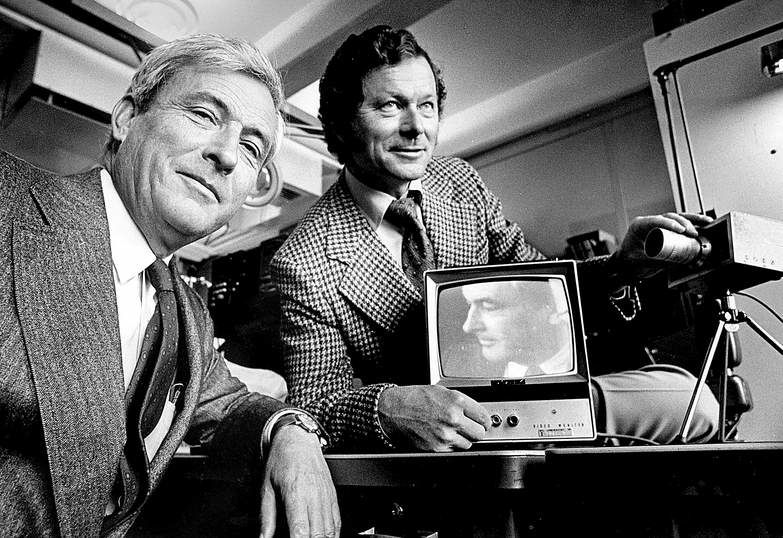Nobel laureate Boyle revolutionized imaging
Published 5:00 am Tuesday, May 10, 2011

- Bell Laboratories scientists Willard Boyle, left, and George Smith with a miniaturized television camera that contains a charge-coupled device, or CCD. Boyle, winner of the 2009 Nobel Prize in Physics, died Saturday in Truro, Nova Scotia. He was 86.
Willard S. Boyle, who won the 2009 Nobel Prize in Physics for helping to develop a device that is at the heart of virtually every camcorder, digital camera and telescope in use, died Saturday in Truro, Nova Scotia. He was 86.
His friend Stuart Semple said the death was “kidney-related.”
Boyle’s prolific scientific career included inventing the first laser to be used in medicine and helping to choose sites on the moon for NASA’s manned landings.
But nothing eclipsed his invention — in only an hour — of the charge-coupled device, or CCD, with George Smith, his colleague at Bell Laboratories.
The device, smaller than a dime, has become ubiquitous. It is the eye behind every picture on the Internet, every digital and video camera, every computer scanner, copier machine and high-definition television.
Its work extends from supermarket barcode readers to the Hubble Space Telescope, from fax machines to the cameras that roamed Mars and the oceans’ floor.
It works by taking advantage of what is called the photoelectric effect, which was explained by Einstein and brought him the Nobel in 1921. The photoelectric effect is the name given to the observation that when light is shined onto a piece of metal, a small current flows through the metal.
Challenge was in the image sensor
The CCD devised by Boyle and Smith captures light and stores it, then displays it by converting it into electrical charges. “The challenge when designing an image sensor,” the Nobel committee said, “was to gather and read out the signals in a large number of image points, or pixels, in a short time.”
The effect, it continued, “transformed photography, as sight could now be captured electronically instead of on film.”
Boyle and Smith split half of the $1.4 million physics prize awarded by the Nobel committee. The other half went to Charles Kao for research that led to the development of fiber optic cables.
Boyle and a co-worker, Don Nelson, developed the ruby laser in 1962. With another colleague, David Thomas, he was given a patent that helped lead to the development of the semiconductor injection laser, which is found in many electronic appliances. In 1962 he was assigned to a Bell subsidiary that offered technical support to NASA. There he helped select lunar landing sites before returning to Bell Labs in 1964.
Boyle credited the vigorous brainstorming sessions at Bell, often over coffee, for inspiring the CCD. He and Smith came up with the idea at a blackboard and immediately “knew we had something special,” he said in his Nobel lecture. The first model based on their idea worked after only an hour’s effort, Boyle said.
Boyle’s survivors include his wife of 65 years, the former Betty Joyce; a son; two daughters; 10 grandchildren; and at least one great-grandchild. Another son died last year.
After winning the Nobel, Boyle summarized his great achievement at a news conference: “We are the ones who started this profusion of little cameras all over the world.”






